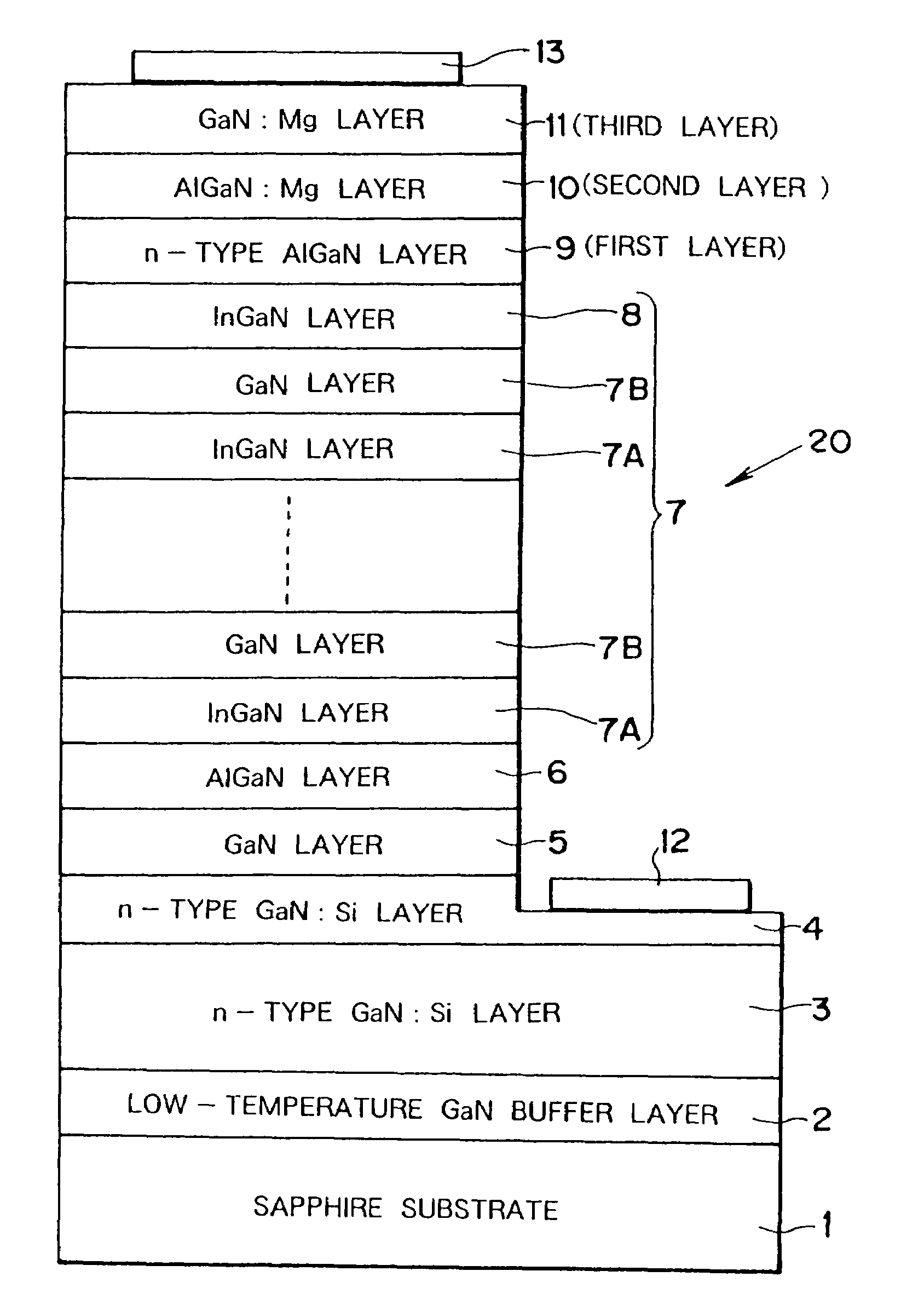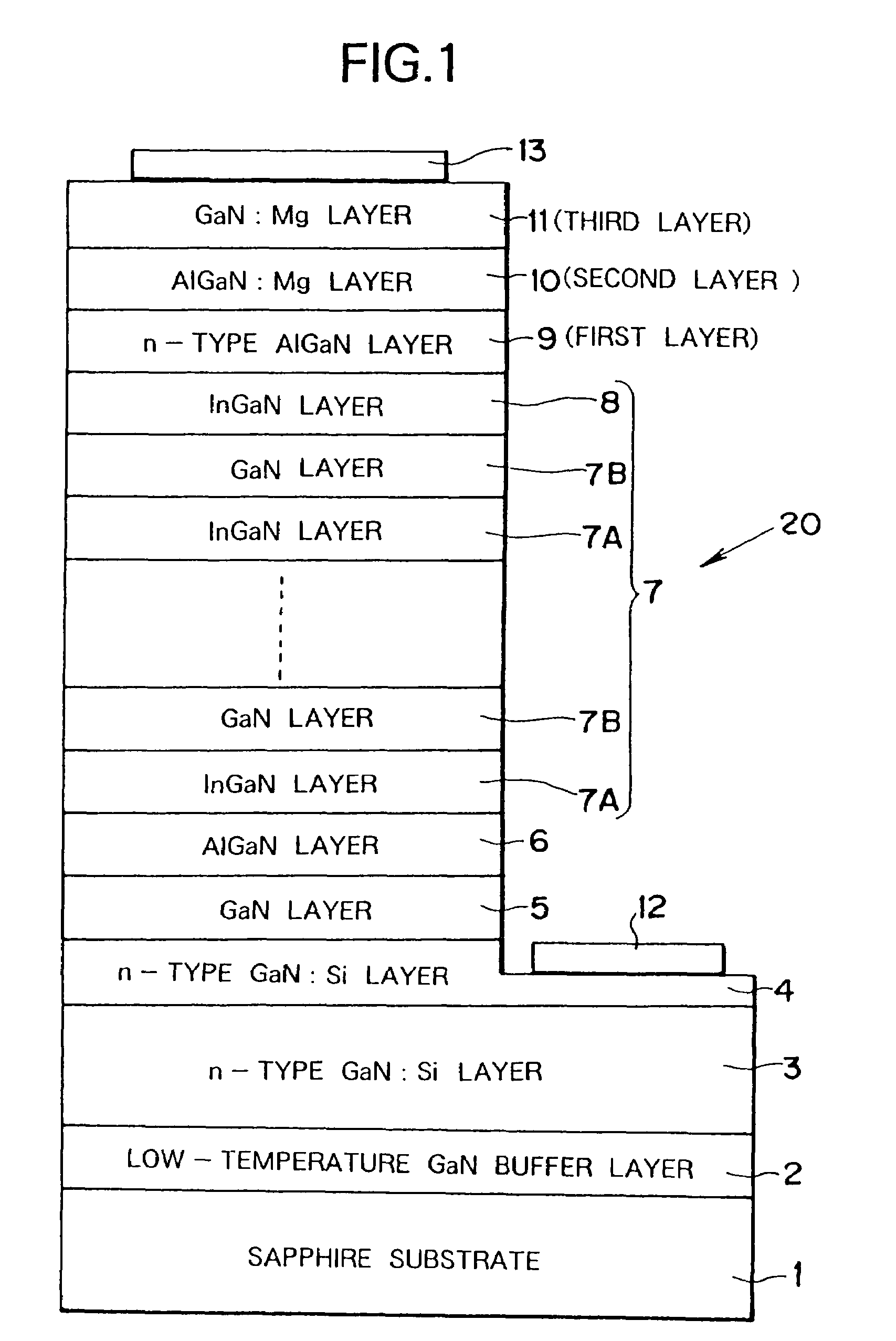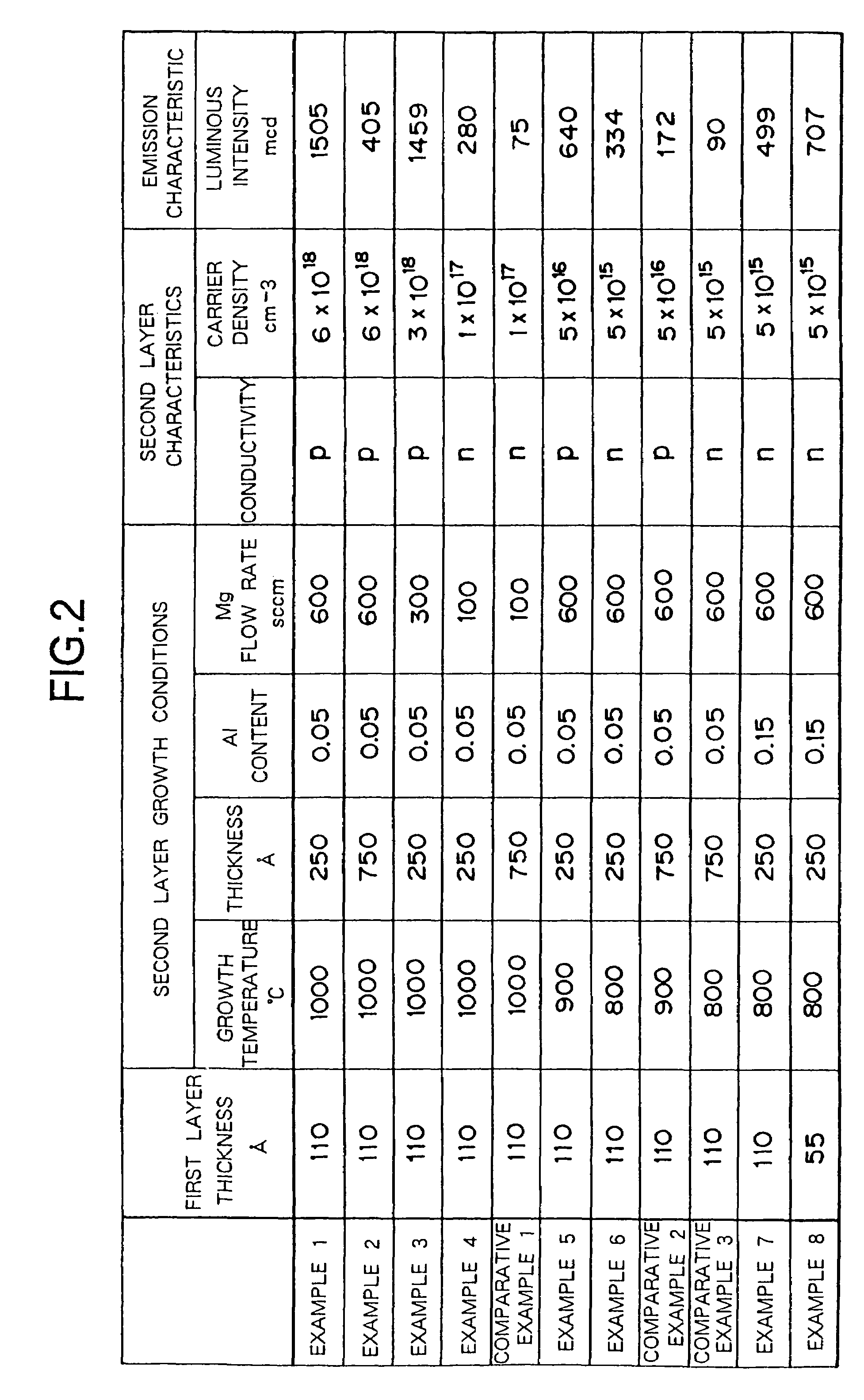Method for producing and epitaxial substrate for compound semiconductor light-emitting device
a light-emitting device and semiconductor technology, applied in the direction of semiconductor devices, basic electric elements, electrical devices, etc., can solve the problems of poor crystallinity of the protective layer, insufficient thermal stability, and lowered injection efficiency of holes into the light-emitting layer structure, so as to achieve excellent protective performance, increase the injection efficiency of holes, and improve the effect of thermal stability
- Summary
- Abstract
- Description
- Claims
- Application Information
AI Technical Summary
Benefits of technology
Problems solved by technology
Method used
Image
Examples
example 1
[0060]The multilayer light-emitting device shown in FIG. 1 was fabricated as explained in the following by using the MOVPE process to grow crystal layers on a sapphire substrate. First, an epitaxial substrate for a compound semiconductor light-emitting device was fabricated starting with a sapphire substrate 1. The sapphire substrate 1 was set in an MOVPE growth furnace and a thin layer of GaN was grown on the sapphire substrate 1 as the low-temperature GaN buffer layer 2 using NH3, MO (TMG) and silane as source gases and H2 as carrier gas. The n-type GaN:Si layer 3 was then grown at 1040° C.
[0061]The sapphire substrate 1 was then once removed from the MOVPE growth furnace, subjected to a prescribed inspection, and returned to the MOVPE growth furnace. The n-type GaN: Si layer 4 was then grown on the n-type GaN : Si layer 3 at a growth temperature of 1040° C. using NH3, MO (TMG, TMA and TMI) and silane as source gases and H2 as carrier gas. The undoped GaN layer 5 was next grown on ...
examples 9-16
[0076]Examples 9 to 16 of the present invention will now be explained. In Examples 9 to 16, light-emitting devices were fabricated under the same conditions as in Example 1 except that an AlGaN layer 9 having an Al content of 0 was used as the first layer, i.e., the first layer was formed as an n-type GaN layer of 180 Å thickness, and the AlGaN: Mg (second) layer 10 was formed under growth conditions differing variously in growth temperature, Al content and Mg flow rate.
[0077]FIG. 4 shows growth conditions and characteristics of each of the light-emitting devices fabricated in Examples 9 to 16, specifically second layer growth conditions (growth temperature (° C.), thickness ( Å), Al content and Mg flow rate (sccm)), characteristics of the second layer (conductivity type and carrier density (cm−3), and measured emission characteristic (luminous intensity (mcd)). In Examples 9-16, the second layer was grown at a growth temperature (° C.) equal to or higher than the value obtained by ...
PUM
 Login to View More
Login to View More Abstract
Description
Claims
Application Information
 Login to View More
Login to View More - R&D
- Intellectual Property
- Life Sciences
- Materials
- Tech Scout
- Unparalleled Data Quality
- Higher Quality Content
- 60% Fewer Hallucinations
Browse by: Latest US Patents, China's latest patents, Technical Efficacy Thesaurus, Application Domain, Technology Topic, Popular Technical Reports.
© 2025 PatSnap. All rights reserved.Legal|Privacy policy|Modern Slavery Act Transparency Statement|Sitemap|About US| Contact US: help@patsnap.com



